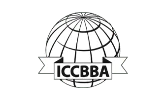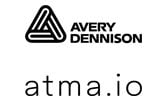If your lab is utilizing cryogenic storage to preserve biological samples you might find that a reliable labeling solution can take some time and effort to find. Even when applied properly, many labels aren’t able to withstand the harsh conditions of the cryogenic storage environment. Even those that are engineered to stand up to extreme temperatures may have difficulty facing the harsh chemicals or storage time involved in your processes.
Using the wrong labels can lead to wasted time, effort, resources and budget when valuable samples are thrown away due to loss of identity. Computype has engineered thousands ofcryogenic labels over the past 40+ years and has the knowledge and experience needed help make sure you are asking the right questions when searching for a great cryogenic label based on your individual needs.
1. Find the right marking technology
Special care must be taken when marking cryogenic samples for storage. Whether you’re marking your labware with traditional pressure sensitive labels or a newer technology you need to ensure your marking method is engineered to withstand your processes. The two most recommended options for cryogenic storage include pressure sensitive cryo labels and direct mark technology. Both technologies are resilient enough to withstand cryogenic storage but have features that make them best suited for different practices.
Pressure sensitive
Pressure sensitive is essentially a more sophisticated way of saying sticky-labels, which is the most commonly used marking technology for barcodes. Pressure sensitive labels are popular for a number of reasons, including their ability to be printed in-house, application variety and time tested convenience.
Pressure sensitive labels have been engineered to suit a wide variety of special applications including cryogenic storage. Cryogenic specific pressure sensitive labels use special substrates, adhesives and inks to ensure all three stay intact through extended cold temperature storage.
A wide range of cryogenic labels are available with different adjustments made to withstand different storage periods, temperature ranges and chemical exposures. The more resilient the labels are the more engineering they require, typically leading to higher prices in specially engineered labels. The higher cost is no cause for alarm however, since engineered for purpose labels can offer a lot of value to the labs they cater to.
For example, here at Computype we offer a special engineered cryo label with a clear wraparound tab that is engineered to withstand temperatures as low as -196 degrees Celsius, direct and vapor liquid nitrogen exposure and multiple freeze and thaw cycles. For labs who store their samples at -80 degrees for 5 years at a time with minimal freeze and thaw cycles, there might be more value in investing in a cryogenic label with less features for a lower cost, but labs that do store samples at -196 degrees Celsius and frequently freeze and thaw them for testing might find a lot of value in ensuring their samples integrity with wraparound technology.
Direct mark
One thing that’s often overlooked when it comes to choosing marking methods in general, is that there are options outside of traditional pressure sensitive labels! In fact, the marking technology known as direct mark, isn’t a label at all, but a process that applies necessary markings directly to your tube or vial.
Direct Mark uses special inks and curing processes or laser etching to place barcodes and other markings directly on the sample container. Without the need for adhesives it provides an extremely durable, chemical and fade resistant mark that can be applied to both glass and plastic containers. Since specialized equipment is necessary for this type of container marking it’s typically only offered as part of an outsourcing program, here at Computype we offer direct mark through our Ready Labware Services program.
When it comes to ensuring the lifespan of your marking technology through cryogenic conditions Direct Mark is the most reliable choice, however it’s not reasonable for all labs. Since Direct Mark is an outsource only option, labs that require variable information on-demand would want to stick to a pressure sensitive option they can print and prepare in house.
2. Find the right print technology
Not only do you need to ensure your label will remain attached to the container, but that your markings will remain attached to the label (unless you’re working with Direct Mark!). This is why the print technology is just as important as the vehicle that attaches your printed markings to the container. Let’s take a look at five popular label printing methods and how they stack up.
Written
Many labs continue to use permanent pens to handwrite information onto cryogenic labels, or directly onto the container itself. Though this may be a viable option in certain cases, it is the most time intensive and least chemical resistant printing option. In addition to this method being time consuming we avoid recommending it because it’s not engineered to withstand temperatures as low as -196 degrees C and there is also potential for information to be recorded illegibly. There are simply too many risks involved in handwriting labels for us to recommend this method to any lab.
Direct thermal
Direct thermal print technology involves heat and labels made from heat activated papers or films. The print head heats up in specific areas so as the label passes beneath, the desired information will appear on the label. Direct thermal labels are only affected by heat, not cold so they are a practical option for cryogenic storage, however they are affected by friction and extended exposure to light. If your samples will face any high temperatures, extended light exposure or scratching risks (robotic grippers!) you may want to consider a different print technology.
Laser imaging
Known for its extremely high image quality, laser imaging uses heat and pressure to bond toner powders to paper surfaces. Although laser imaging can provide extremely high quality print imaging you should know that your label options are limited.
Most laser printers are designed to print on sheets rather than rolls, meaning if you often print labels one at a time or in very small quantities you may end up wasting blank labels. Additionally, laser printing isn’t accommodating to all adhesive types. Some adhesives will ooze under the extreme heat and pressure involved in the laser printing process leading to printer damage and/or poor sample integrity. Lastly, labels intended for laser printers are most often made from paper which changes structurally after extended frost exposure and may not stand up to certain lab chemicals. In other words, if you intend on printing in small batches or keeping your samples in cryo strorage for an extended time period, laser is probably not an ideal print option.
Inkjet
Inkjet printers spray ink onto porous label surfaces where it is absorbed. These printers can accommodate a variety of colors while providing fairly high print quality making them a good option when logos or branding information is desired. Inkjet, similar to laser, is limited in materials. Most inkjet labels are paper or similarly porous materials since it’s most responsive to the liquid ink. They also tend to come in sheets rather than rolls—however Epson does offer one at a time inkjet cryo-label printing. Lastly, this print technology is both the slowest and most expensive option. If branding and quantity are important factors in your processes inkjet labels may be a good match, however if speed and label materials are important to you, a different option may serve you better.
Thermal transfer
Thermal transfer printers also employ a heated print head similar to direct thermal print, but rather than utilizing heat reactive labels, the markings are applied to the labels with ink ribbons. Both the labels and the ink ribbon run beneath the print head simultaneously as the print head heats up and presses down on both the label and the ribbon.
As the print head heats the ribbon the ink is stamped onto the label, permanently bonding it to the label. This method of printing creates an extremely durable, clear and resilient image when the right ribbon and label material are matched, which is why we recommend this print technology above all others.
Thermal transfer print technology has been around for a long time and has a history in the medical, and other harsh environment industries. Due to the history of thermal transfer print technologies in healthcare and harsh environment applications, thermal transfer has the widest variety of ink and stock material options to accommodate all sorts of lab practices and exposures including cryogenic storage.
Our recommendations…
The print technology you choose to implement in your lab depends entirely on your processes and application, but we will admit that here at Computype we are a bit biased. When it comes to pressure sensitive labels we only offer thermal transfer print technology because it is the most reliable in harsh environments and most accommodating to label materials. Thermal transfer print technology is also known to provide extremely high quality fine edge barcodes. When the right ink ribbon is matched with the best label material for your practices you can ensure thermal transfer printed labels will stand up to your cryogenic storage and chemical exposures.
Additionally, direct mark is a print technology on its own, printing directly onto the sample container. Direct mark printing is what we recommend to cryo labs whose samples are too valuable, or storage and processing practices are too harsh for pressure sensitive labels. We also recommend direct mark when branding or color coding is important since this print technology can accommodate color.
3. Consider your internal variables
Every lab has their own way of doing things, so it’s important to discuss your processes with your label supplier so you can work together to find a cryo label that will suit your lab. Everything from the containers you use to the amount of time you store your samples will affect which solutions best suit your practices.
Container type
Containers come in a variety of shapes, sizes and materials, all of these need to be kept in mind when choosing your cryo labels.
Although many marking technologies are capable of being applied to glass, glass containers can rarely withstand cryogenic conditions making it necessary that you choose a marking technology that’s compatible with both plastic containers and cryogenic conditions.
The size and shape of your container will affect your choices as well. With basic tubes and vials it’s very important to consider the diameter of your vials, not only to ensure you’re taking advantage of the available surface area, but also because many cryogenic labels use wraparound laminates. Cryogenic labels with wraparound laminates have a clear laminate that extends beyond the label and wraps around the tube, covering the label with a protective layer. Wraparound labels are particularly useful in cryo applications because of the harsh conditions and exposures.
Non-traditional container shapes also need special attention, especially conical tubes and vials. There are labels designed specifically to align with the curvature of conical tubes, but depending on your processes and needs you may want to look into a custom marking solution.
Processing time
The amount of time you are storing your labware is something else to keep in mind when it comes to selecting a cryo label. The longer your samples are kept, the more likely your labels are to fall off. This is because the cold temperatures degrade the adhesive. So, the longer you plan on storing your samples the more important it is you choose a label that can hold up for an extended period of time.
Direct Mark is strongly recommended in situations where samples are stored for extended periods of time because the lack of adhesive keeps the barcode attached to the container no matter how long it’s stored.
Exposure
When choosing cryo labels always consider every exposure your samples may encounter. The most common exposures to consider are temperature and chemicals.
Obviously cold temperatures are involved in cryogenic sample storage, but it’s important to consider how cold your freezers are when choosing labels. Some marking strategies are only able to withstand temperatures as low as -80 degrees Celsius and others are able to handle temperatures as cold as -196 degrees Celsius. Some can face direct exposure to liquid nitrogen and others can’t. Take a look at your freezing processes and narrow down your marking options from there based on their ability to withstand your processes.
In addition to cold temperatures your samples are likely to come into contact with chemicals during testing. Most cryo labels can withstand common lab chemicals but you should always let your label supplier know which chemicals are involved in your processes.
Freeze and thaw cycles
As your samples move in and out of storage and testing they will go through freeze and thaw cycles. Throughout the process of freezing and thawing labels will shrink and stretch, affecting their ability to adhere to the surface and sometimes the quality of the print on the label. If it’s common for your samples to undergo repeated freeze and thaw cycles you will need to find a label that can maintain integrity through those processes. If you choose to go with pressure sensitive labels look for ones that can withstand temperatures as low as -196 degrees or consider Direct Mark, as it is unaffected by repeated freezing and thawing.
Variable information
If your processes require variable information to be printed out on the spot you will be limited to using pressure sensitive labels. As previously mentioned, there are a wide variety of pressure sensitive labels special engineered to endure all kinds of cryogenic conditions and testing processes so you should be able to find a trustworthy label no problem despite not having access to direct mark technology. You will just need to ensure you and your lab technicians are following best practices during application to maximize the lifespan and integrity of your sample identification.
By asking your supplier the right questions, you will be able to choose the right cryo labels for your needs. When choosing cryo labels keep in mind the marking technology, print technology and your processes to make sure you are asking the right questions and finding the best solutions. Additionally, by following best practices with your labels you can ensure your sample integrity and improve efficiencies. Wondering where you can find reputable cryogenic labels? Check out our blog post outlining the top cryo label suppliers.
Connect with our labelling experts today
Blog article form
"*" indicates required fields












